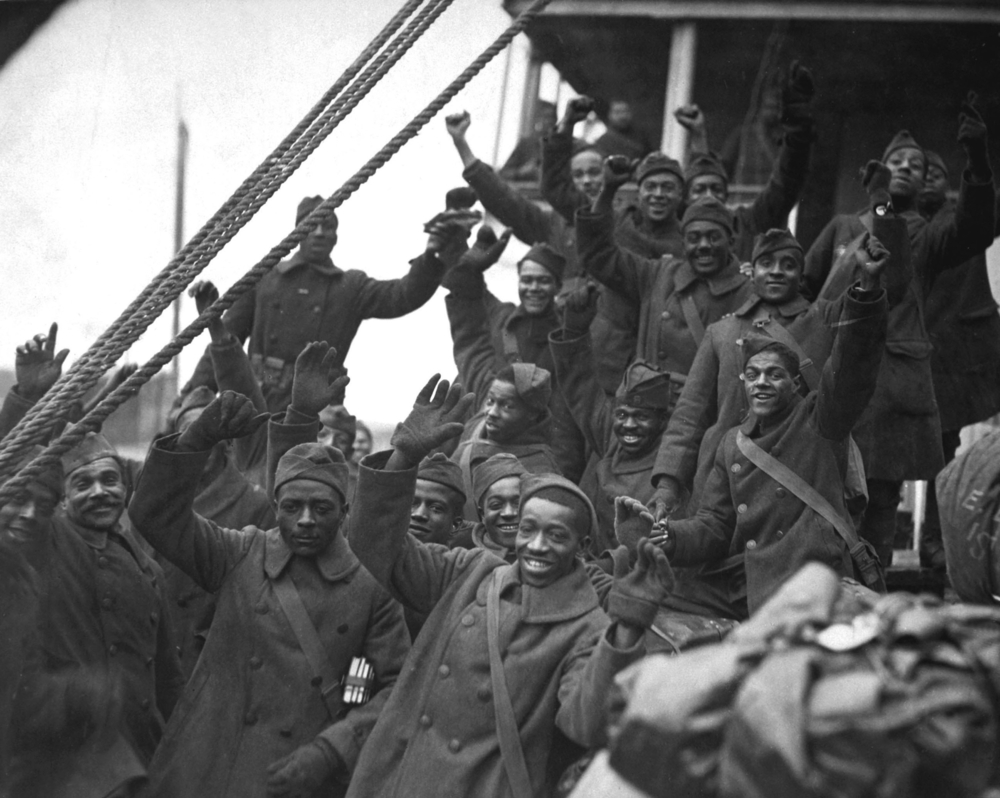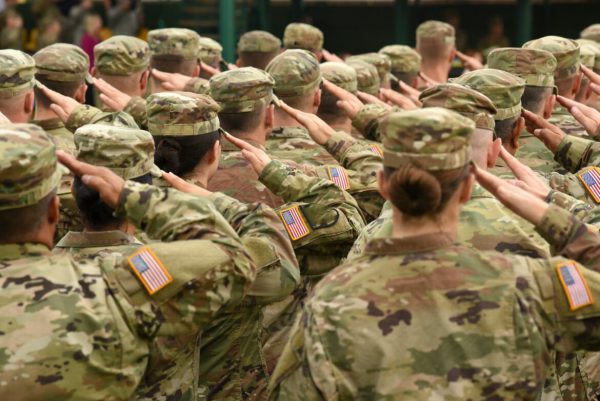These African American soldiers distinguished themselves during World War I, only recently receiving credit for their accomplishments.
The value of history is its marriage to the truth of what has transpired. We should not shirk the truth because we are uncomfortable about what leaders of different eras did, nor should we engage in cancel culture simply because what was done is repugnant by today’s standards. Let us learn to admit that these horrors took place and vow never to repeat them.
For our latest veteran’s piece, we would like to relate the story of an amazing group of men who served in World War I, the Harlem Hellfighters. To fully appreciate their story, it is important that we lay a foundation of events that led to a story worth telling.
On April 2, 1917, President Woodrow Wilson asked a special joint session of the United States Congress for a declaration of war against the German Empire. Congress responded with the declaration on April 6. Unfortunately, our military was far from ready to fight.
In his speech before Congress, President Wilson stated, “The world must be made safe for democracy.” For many, Wilson’s rhetoric smacked of hypocrisy. He was the president who had screened The Birth of a Nation (a film glorifying the Ku Klux Klan) at the White House and refused to support a federal anti-lynching bill even though each year was averaging more than one lynching a week, predominantly in former Confederate states that had effectively stripped black men of their voting rights.
When the United States declared war against Germany, the nation had a standing army of 127,500 officers and men. Wilson knew the United States required a leader who could build and lead an American Army of millions into battle. On July 5, 1917, President Wilson appointed General of the Armies John Joseph Pershing, nicknamed “Blackjack,” a senior United States Army officer, to serve as the commander of the American Expeditionary Forces in Western Europe.
That Pershing built an American Expeditionary Force that grew to be two million men under arms when the Armistice was signed on November 11, 1918, was nothing short of miraculous. He had many challenges, not the least of which was the inability to integrate black and white units. Offering the 369th Harlem Hellfighters to the French army was his way to solve a political problem.
The French and British were demanding American reinforcements for their badly depleted divisions. Pershing had orders from President Woodrow Wilson that he form an independent American force in France to strengthen Wilson’s clout in eventual peace talks. Wilson had no problem with having an African American unit serve with the French.
The 369th Regiment, a unit comprised of 2,000 African American soldiers, arrived in Brest, France, on January 1, 1918. On the docks, they surprised French soldiers and civilians with a jazz rendition of La Marseillaise. The French had little knowledge of jazz, enjoyed the rendition, and sang along with the music.
After three weeks’ training by French troops, the 369th entered the combat trenches on April 15, 1918, more than a month before the American Expeditionary Forces’ first major battle. For three months, as the German spring offensive was miles away, the 369th manned the front line and fought skirmishes warding off German raiding parties where they distinguished themselves.
As the war raged on, they served in the fiercest battles that American troops were engaged in. Belleau Wood and the Meuse Argonne offensive were just two of them. On June 4, 1918, the 5th Marine Regiment was combined with Army units that formed the 2nd Division, which included the 369th Regiment in Belleau Wood. Joseph Persico noted in his book, Eleventh Month, Eleventh Hour: Armistice Day 1918, the division had casualties of 9,272 men killed, wounded, or missing during the Belleau Wood engagement.
From September 26 through the end of October, the Meuse Argonne offensive was fought. It was the largest single engagement ever undertaken by American Armed Forces. There were 1.2 million men involved. The AEF took 98,000 casualties with 26,000 dead.
The Hellfighters served in the trenches for 191 days. They spent more time in action and suffered the highest casualty rate of any other American Regiment. They never retreated and suffered 1,500 casualties.
The French had no problem recognizing the bravery and courage of the Hellfighters and awarded them the Croix de Guerre for gallantry in action. The Croix de Guerre (Cross of War) is a French military decoration created in 1915 to reward feats of bravery, either by individuals or groups, during World War I. It was awarded again in World War II.
The Hellfighters, the most celebrated African American regiment in World War I, confronted racism even as they trained for war, helped bring jazz to France, and then battled Germany longer than almost any other American doughboys. No one seems to know where their name came from. Like their predecessors in the Civil War and successors in the wars that followed, these African American troops fought a war for a country that refused them basic rights. Their bravery has stood as a rebuke to racism and a moral claim to first-class citizenship.
On August 5, 2021, President Joseph Biden signed into law the awarding of a Congressional Gold Medal to the members of the 369th Regiment of World War I.
Footnote
The discrimination experienced by the Hellfighters was repeated in World War II. The African Americans showed their patriotism in units such as the Red Ball Express, a transportation outfit where 75% of the drivers were African Americans. They had to continually supply Patton’s Third Army as they fought from the beaches of Normandy through the Battle of Bastogne, eventually subduing the Germans on what was the Western Front.
There were also the Tuskegee Airman who volunteered to become America’s first Black military pilots. They gained fame by flying cover for the B-17s and B-24s bombing Germany in 1944–1945. They had one of the lowest loss records of all the escort fighter groups and were in constant demand for their services by the allied bomber units—a record unmatched by any other fighter group.
On July 26, 1948, President Harry S. Truman finally signed executive order 9981, establishing the President’s Committee on Equality of Treatment and Opportunity in the Armed Services, committing the government to integrating the segregated military.
Sources
The Baltimore Afro-American, commonly known as The Afro or Afro News, a weekly African American newspaper published in Baltimore, Maryland, describes the African American reaction to President Wilson’s racism.
An article entitled “One Hundred Years Ago, The Harlem Hellfighters Bravely Led the U.S. into WW I” by Erick Trickey. This was an article in Smithsonian magazine.
Eleventh Month, Eleventh Day, Eleventh Hour: Armistice Day, 1918 by Joseph Persico details the intensity of the fighting at Belleau Wood and the Meuse Argonne offensive.
Article in the Thursday, August 25, 2021, issue of the NY Daily News written by Michael Gartland entitled “Biden Signs Off on Highest Honor for WWI’s Harlem Hellfighters.”
Wikipedia for dates of events throughout WWI as well as unit figures at the beginning and end of the war.
Biography.com for references to General John J. Pershing.
Red Ball Express by Dante R. Brizill is a book that tells the story of 82 days that this amazing resupply never stopped running despite exposure to German ground and air threats.
History.com for the story of the Tuskegee Airmen.
Access Related Content




